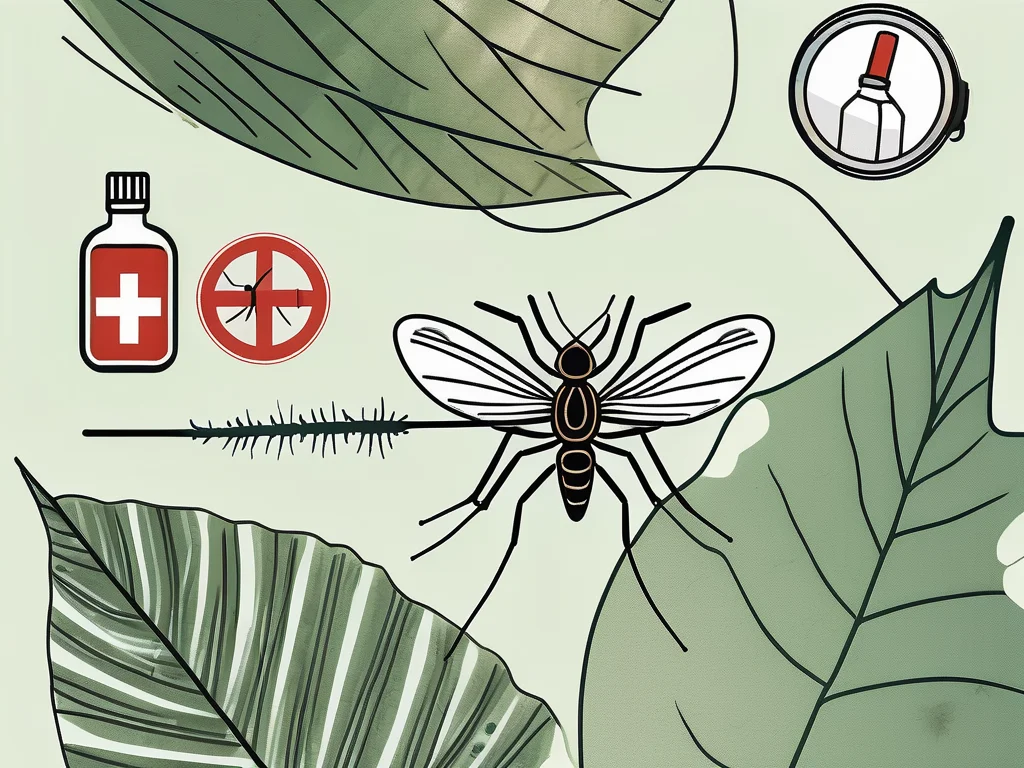Dengue fever, a mosquito-borne viral infection, poses a significant health challenge in tropical and subtropical regions. One of its hallmark signs is early dengue rashes, which play a critical role in early diagnosis and management. This blog explores the symptoms, causes, and treatment options for dengue rashes, providing insights into this prevalent illness. By understanding these aspects, individuals and healthcare providers can better address dengue fever and its complications.
What Is Dengue Fever?
Dengue fever is caused by the dengue virus, transmitted primarily through bites from infected Aedes aegypti mosquitoes. The virus exists in four serotypes (DENV-1, DENV-2, DENV-3, DENV-4), and infection with one serotype does not confer immunity to others. This increases the risk of severe dengue in subsequent infections due to antibody-dependent enhancement (ADE).
Key Points:
- Cause: Dengue virus, a member of the Flaviviridae family.
- Transmission: Spread by Aedes mosquitoes, mainly Aedes aegypti.
- Serotypes: Four distinct serotypes, leading to potential reinfections.
Understanding the virus’s behavior is crucial for identifying its symptoms, including early dengue rashes, and implementing preventive measures.
How Does Dengue Spread?
Dengue spreads when a female Aedes mosquito bites an infected person, acquiring the virus, which then replicates in its salivary glands. The mosquito transmits the virus to another human through subsequent bites. Environmental factors like warm temperatures and high humidity facilitate mosquito breeding, increasing dengue transmission risks.
Key Points:
- Primary Carrier: Aedes aegypti mosquito.
- Environmental Factors: Climate change and urbanization boost mosquito populations.
- Prevention: Reducing mosquito breeding sites is critical to controlling outbreaks.
By addressing mosquito proliferation, communities can significantly lower the incidence of dengue fever.
What Are Early Dengue Rashes?
Early dengue rashes are a key indicator of dengue fever, appearing during the initial stages of the illness. Recognizing their characteristics and timing aids in timely diagnosis and management.
Characteristics of Dengue Rashes
Dengue rashes typically manifest as small, raised, pink or red spots on the skin, often itchy. They may appear on the face, trunk, or limbs and can sometimes merge, creating a flushed appearance. These rashes differ from other viral exanthems, such as those caused by measles or rubella, requiring careful diagnosis.
Key Points:
- Appearance: Pink or red, raised spots, sometimes confluent.
- Location: Face, trunk, and extremities.
- Differentiation: Must be distinguished from other viral rashes through clinical evaluation.
Timing of Dengue Rashes
These rashes usually emerge three to four days after the onset of fever, the primary symptom of dengue. They often fade within a few days without specific treatment but warrant medical attention if accompanied by severe symptoms.
Key Points:
- Onset: 3–4 days after fever begins.
- Duration: Typically lasts a few days.
- Action: Consult a doctor for evaluation, especially with severe symptoms.
Early recognition of rashes can prevent complications like plasma leakage or severe bleeding.
What Symptoms Accompany Dengue Rashes?
Dengue rashes are rarely isolated and often occur alongside other symptoms that define the illness’s clinical presentation.
Fever and Flu-Like Symptoms
High-grade fever is the hallmark of dengue fever, often accompanied by flu-like symptoms such as headaches, muscle and joint pain (myalgia and arthralgia), and fatigue. These symptoms typically precede rashes and help differentiate dengue from other infections.
Key Points:
- Primary Symptom: High fever.
- Additional Symptoms: Headache, muscle/joint pain, fatigue.
- Progression: Fever phase may lead to a critical phase with severe complications.
Pain and Discomfort
Dengue fever causes significant pain, including muscle and joint aches, eye pain, abdominal discomfort, nausea, and vomiting. These symptoms can be debilitating, affecting mobility and quality of life.
Key Points:
- Types of Pain: Myalgia, arthralgia, eye pain, abdominal pain.
- Impact: Can severely limit daily activities.
- Management: Requires comprehensive symptom relief strategies.
Monitoring these symptoms alongside rashes ensures timely intervention to prevent severe outcomes.
What Causes Dengue Rashes?
Dengue rashes result from the body’s immune response to the dengue virus, particularly through vascular leakage and inflammation.
Immune Response to Dengue
When the dengue virus enters the body via a mosquito bite, it infects immune cells like monocytes and macrophages, triggering the release of cytokines and inflammatory mediators. This immune response leads to rashes and other systemic symptoms. In cases of prior exposure to a different serotype, ADE can intensify symptoms, including rashes.
Key Points:
- Mechanism: Immune response causes inflammation and vascular leakage.
- ADE Effect: Prior infections may worsen rash severity.
- Complexity: Immune response varies by individual and serotype.
Factors Influencing Rash Severity
The severity of dengue rashes depends on factors like the virus serotype, the individual’s immune response, and underlying health conditions. Genetic predispositions may also influence rash development and disease severity.
Key Points:
- Influencing Factors: Virus serotype, immune response, health conditions.
- Genetic Role: Variations in immune-related genes may affect severity.
- Monitoring: Tailored management based on individual factors.
Understanding these causes helps healthcare providers predict and manage rash severity effectively.
How Are Dengue Rashes Treated?
Managing dengue fever and its rashes involves a combination of medical interventions and self-care to alleviate symptoms and prevent complications.
Medical Interventions
No specific antiviral treatment exists for dengue. Medical care focuses on supportive measures, including:
- Antipyretics: To reduce fever.
- Analgesics: For pain relief.
- IV Fluids: For severe dehydration or plasma leakage.
Key Points:
- Focus: Symptom relief and supportive care.
- No Antiviral: Treatment targets symptoms, not the virus.
- Hospitalization: May be needed for severe cases.
Home Remedies and Self-Care
Self-care measures complement medical treatment and include:
- Rest: Adequate rest to support recovery.
- Hydration: Increased fluid intake to prevent dehydration.
- Soothing Lotions: To relieve rash-related itching.
Key Points:
- Rest and Hydration: Essential for recovery.
- Itch Relief: Use doctor-approved lotions or creams.
- Consultation: Always seek medical advice before using remedies.
A holistic approach combining medical and self-care measures ensures effective symptom management.
How Can Dengue Be Prevented?
Preventing dengue involves reducing mosquito exposure and controlling breeding sites. Key strategies include:
- Mosquito Repellents: Use repellents and wear protective clothing.
- Eliminate Breeding Sites: Remove standing water from containers, tires, and other areas.
- Community Efforts: Implement mosquito control programs in high-risk areas.
Key Points:
- Personal Protection: Repellents and clothing reduce bite risk.
- Environmental Control: Eliminate stagnant water to curb mosquito breeding.
- Public Health: Community-wide efforts lower outbreak risks.
Why Is Early Diagnosis Important?
Early diagnosis of dengue fever, facilitated by recognizing rashes and symptoms, enables timely intervention to prevent severe complications like dengue hemorrhagic fever or dengue shock syndrome. Regular monitoring and medical consultation are critical for at-risk individuals.
Key Points:
- Early Detection: Rashes and symptoms aid diagnosis.
- Complication Prevention: Timely care reduces severe outcomes.
- Monitoring: Essential for high-risk patients.
Conclusion
Early dengue rashes are a critical diagnostic marker for dengue fever, a widespread mosquito-borne illness. By understanding their characteristics, accompanying symptoms, causes, and treatment options, individuals and healthcare providers can better manage this condition. Combining medical interventions, self-care, and preventive measures ensures effective control of dengue and its complications. Stay vigilant, seek timely medical advice, and adopt preventive strategies to combat this public health challenge.



